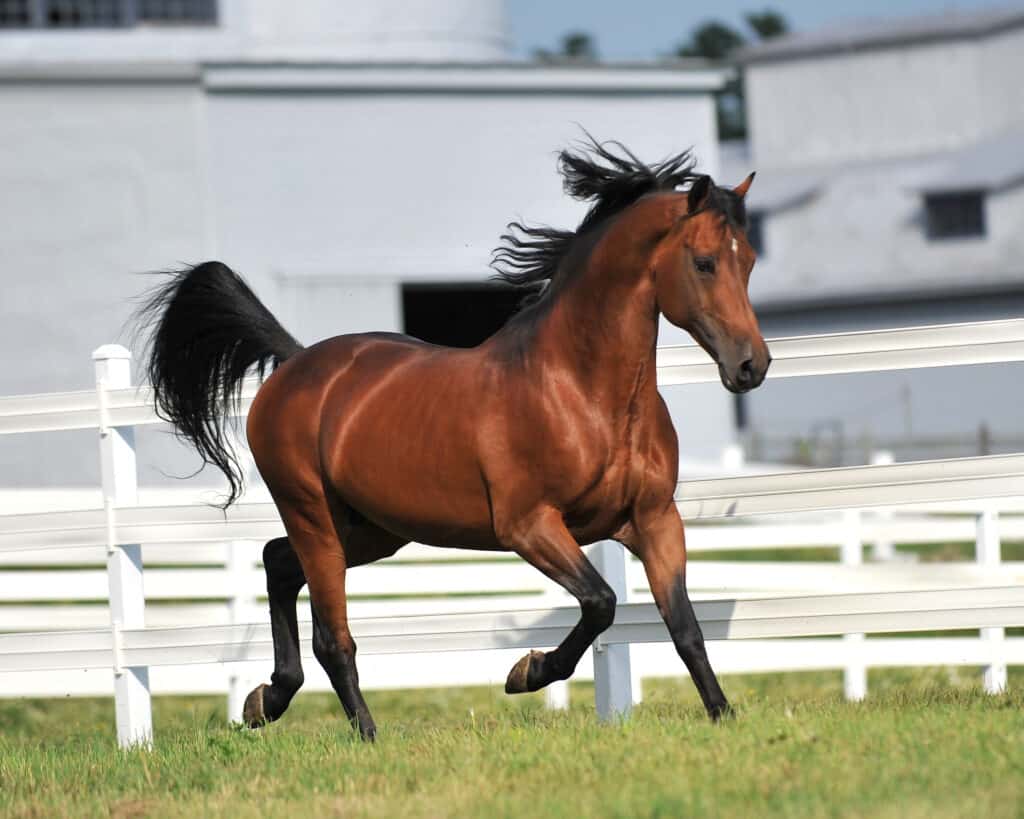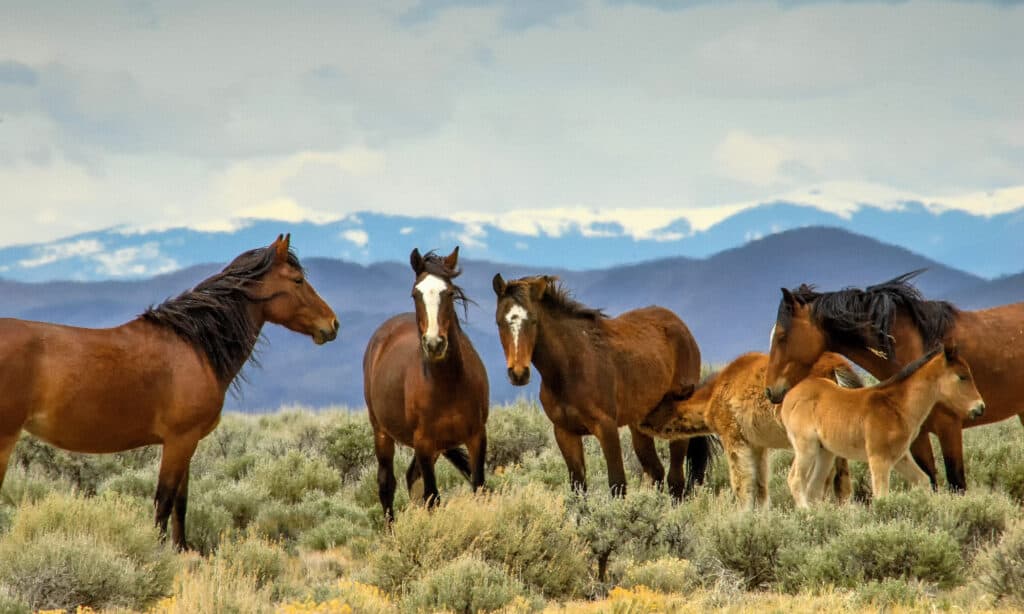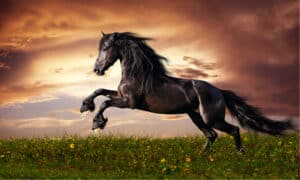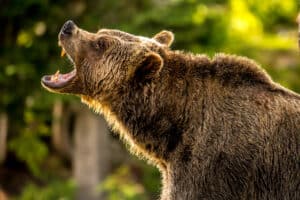One of the finest studied evolutionary histories in all of paleontology is that of the horse. The history of the horse family Equidae began in the Eocene Epoch, which lasted from roughly 56 million to 33.9 million years ago. The earliest records of horses can be traced back to the Hyrcotherium breed, fossils of which have been found in parts of North America and Europe. One interesting fact about this early breed of horses is that they were very small and miniature compared to modern horses.
However, like with most things, change was inevitable. Over a period of at least 50 million years, horses evolved from small, many-toed animals to the one-toed equines we recognize today. The evolution of horses was particularly noticeable because their legs grew longer to suit their needs to travel long distances over the grassland.
Knowing that horses were not always as big as they are, it is a wonder how big these animals can actually get. How big do you think the biggest horse on record is? Keep reading to find out.
What Do Horses Look Like?

Horses have oval-shaped hooves, long tails, short hair, and long slender legs.
©Christopher Crosby Morris/Shutterstock.com
Generally, horses are big animals. However, the weight and height of these animals vary for a number of reasons, including their diet, their breed, and other environmental factors.
It is essential to know that although there are only one species of domestic horse in the entire world, there are around 400 breeds classified under that species. Despite belonging to different breeds, horses share the same general features. All horses have long necks that hold up their large, long heads. Interestingly, these animals have the biggest eyes of any land-living mammal.
One of the most fascinating features of any horse is the long mane that grows from their heads all the way to the base of their necks. They also grow hair on their tails, but because of how short their tails are, the hair there is usually not a lot.
Another way to recognize them is through their one-toed hooves. The hoof is the lowest portion of each horse’s leg, which makes contact with the ground and bears the animal’s weight. Because horse hooves are prone to injuries from rough ground and terrains, these animals need “shoes.” Horses wear shoes largely to strengthen and protect their feet and hooves, as well as to delay a premature deterioration of their hooves.
Where Do Horses Originate From?
Horses originated in the wild, specifically in the steppes of Central Asia. The first horses, known as Eohippus or Hyracotherium, appeared around 55 million years ago, and over time they evolved into the modern horse species that we know today.
Horses have been domesticated by humans for thousands of years, with evidence of horse domestication dating back to around 4000 BC in the steppes of Central Asia. Horses were initially used for transportation, hunting, and as a source of food.
The horse played an important role in human history, especially in nomadic cultures and ancient civilizations, where it was used for transportation, warfare, and work. With the invention of the wheel, horses were used to pull chariots and wagons, and as the use of horses spread, so did human civilizations.
The domestication of horses also allowed for the development of different breeds, each with its own unique characteristics and traits, which were selectively bred for specific purposes such as racing, hunting, and agriculture. Today, horses are used for a wide variety of purposes, including transportation, sport, recreation, and as therapy animals.
What Is The Lifespan Of Horses?
The lifespan of a horse can vary depending on the breed, individual genetics, and care provided. On average, horses can live for around 25 to 30 years. However, some horses have been known to live for much longer, with some individuals living well into their 30s and even 40s. Lifespan can also vary depending on the breed, for example,
Thoroughbred horses which are bred for racing typically have a shorter lifespan and can live around 20 to 25 years while draft horses like Shire horses, Percheron horses, etc are known to live longer around 25 to 30 years. Factors that can affect a horse’s lifespan include genetics, diet, exercise, and overall care.
A horse that receives proper nutrition, regular veterinary care, and regular exercise is more likely to have a longer lifespan than one that does not.
It’s important to note that while horses can live for a long time, they are also prone to certain health issues, such as lameness, colic, and dental problems, that can shorten their lifespan if not properly treated.
Where Are Horses Found?

Horses are present in North America and Europe.
©Adventure_Images/Shutterstock.com
Domestic horses can practically live anywhere as long as they have access to food, shelter, and freedom to roam. Apart from North America, horses can also be found in Europe. Although horses have long been a part of European civilization, they weren’t domesticated until roughly 4500 BC for use as either livestock or transportation.
To this present day, there are horses all around Europe and even parts of Africa. The only continent that does not have horses is Antarctica, although they were there at some point in history. Horses can also be found in zoos across the world. There are horses of many breeds and sizes in petting zoos and other attractions. However, Przewalski’s horses, famous for their shaggy, dark-colored mane and tail, are the most well-known to exist in zoos today.
What Do Horses Eat?

Horses are herbivores, which means they eat a lot of vegetation, including grass and hay. Wild horses like open areas with lots of new grass since they spend most of their day grazing, frequently in huge groups. Additionally, open spaces enable them to spot potential predators and other risks from a distance, enabling them to run away quickly. As each horse must fend for itself, its habitats vary depending on geography and the accessibility of food, water, and shelter.
What Is The Largest Horse Ever Recorded
The largest horse ever recorded was a Shire horse called Sampson. The height of horses is usually not measured in feet or inches but in hands, and one hand equals four inches. Sampson stood at 21.25 hands, which is approximately 7 feet and 2.5 inches. Apart from being the tallest horse ever, he was also the heaviest at 3,360 pounds. Sampson was foaled in 1846 in Toddington Mills, Bedfordshire, England, and by the age of four, he was renamed Mammoth because of his impressive size.
The height of a typical mature horse measures 14 to 17 hands. However, depending on the breed, some might reach 18 hands, and others can be as tiny as eight to nine hands. The largest horses in the world are those that are bred to pull or carry huge loads, such as the Clydesdale, Shire, Belgian, and Percheron horses. The smallest include the Shetland pony, Falabella, and miniature horses, which are very tough and resilient for their size.
The typical lifespan of domestic horses is between 25 and 30 years. Despite being the largest horse ever recorded, Sampson died at the age of 21. However, the oldest horse ever discovered passed away in 2007 at the astonishing age of 56. Interestingly, wild horses can sometimes exceed the lifespan of a domestic horse, but rarely.
The oldest living wild horse was said to have died at age 36. Sampson’s owners took the initiative to castrate him since they could easily predict how big he would get as a young horse, given how huge he grew. Horses that are castrated or spayed are known as geldings and cannot have offspring.
Apart from Sampson, there have been other large horses that have competed for the title of the largest horse ever recorded, and one of them is Big Jake. Before his recent passing in 2021, Big Jake, a Belgian Draft, held the record for being one of the tallest horses still in existence.
The massive chestnut gelding measured 20.2 3⁄4 tall (6 feet and 10 inches) and weighed 2,600 pounds (1,179 kg). Like Sampson, the owners of Big Jake knew how big he was going to be, considering he was 240 pounds (109 kg) when he was born in 2001. So, they castrated him before he could reproduce.
Who First Rode Horses?
It is believed that horses were first domesticated in what is now northern Kazakhstan. Researchers speculate that an ancient culture of people called the Botai rode them and drank their milk. They came upon this conclusion, with a new study of ancient DNA, when they discovered pottery that contained traces of milk from a mare as well as horses’ teeth with signs of wear from a riding bit.
The photo featured at the top of this post is © Osetrik/Shutterstock.com
Sources
- Modern Farmer, Available here: https://modernfarmer.com/2015/12/biggest-horse-in-the-world/
- Guinness World Records, Available here: https://www.guinnessworldrecords.com/world-records/70453-tallest-horse-ever
- Equestrian Surfaces, Available here: https://www.equestriansurfaces.co.uk/news/crazy-horsey-world-records/
Thank you for reading! Have some feedback for us? Contact the AZ Animals editorial team.






